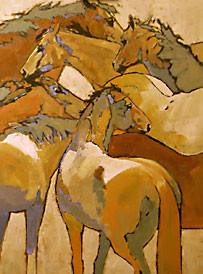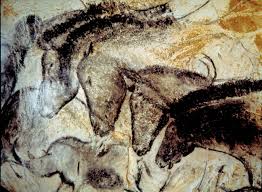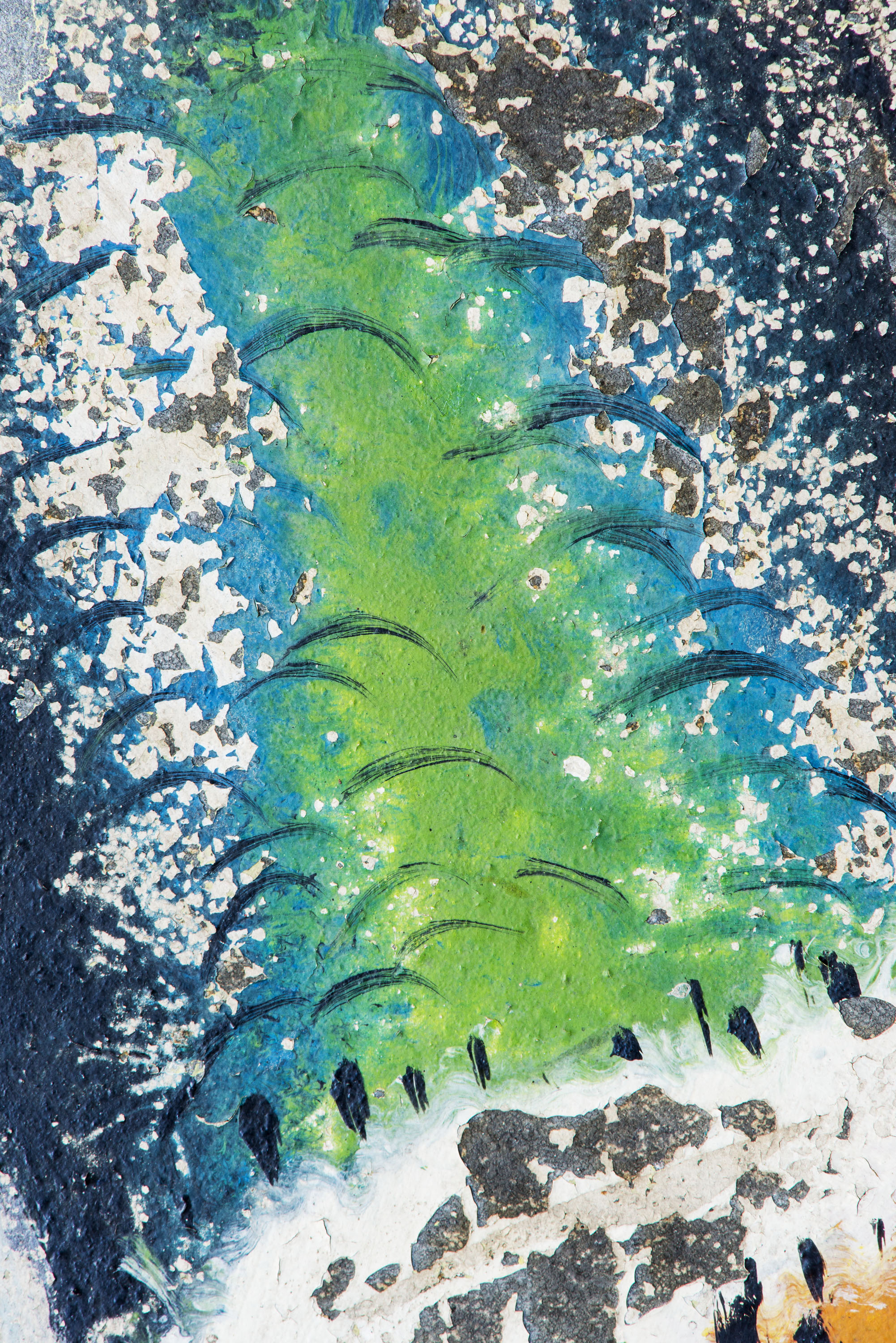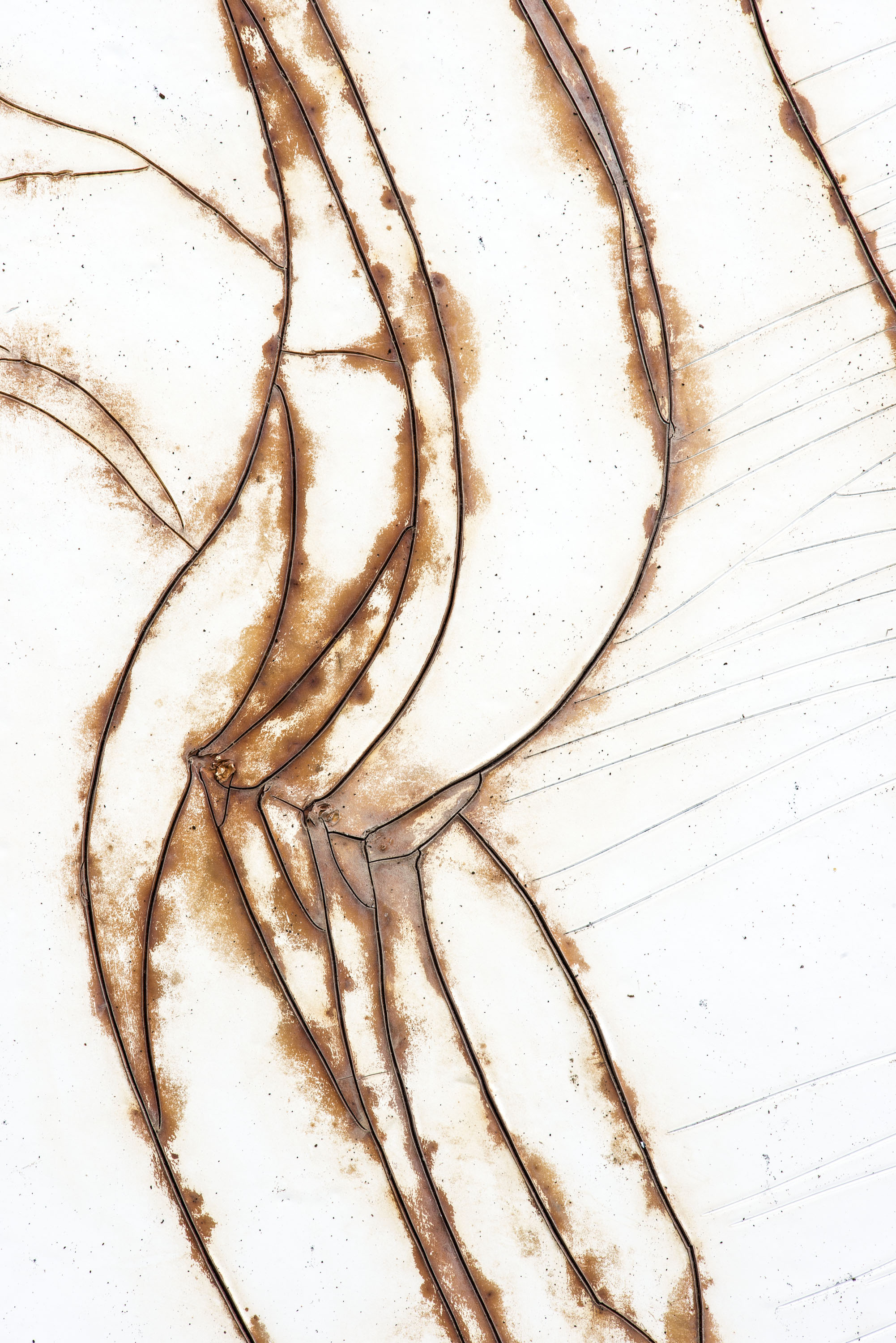Do You See Penguins?
February 13, 2015
Form is a critical part of what we evaluate when looking at art. My current show at the Ann Korologos Gallery was inspired by form and color. Peggy Judy’s acrylic paintings and my abstract photographs create a unique mixture and contrast of the use of form. The beautiful forms within Peggy’s paintings, are somewhat abstract, but recognizable shapes as horses, Indians and Western landscapes; while the forms within my abstract photography are less specific and open to interpretation.



Here are some of my other thoughts on form:
Form is the manifestation of expression. It is the movement, the message, the impact of art. Color and general aesthetic may reel us in but form sets the hook. My “Life in Motion” triptych is an example of the influence of form. With a white background the fluidity of the rust-colored lines make these pieces primarily about the expression of movement. The message is abstract allowing each person to find their own connection to its meaning. When I look through the viewfinder, I’m searching for an abstract form that can inspire and remain open to interpretation.

To comment on this post please visit my blog on


(Caballos Chaos by Peggy Judy & Chauvet Cave drawings)
As an artist, I’ve have always been drawn to abstract art's ability to stimulate the mind, and our individual experiences add even more layers to artistic interpretation of form. An example of this is the Christmas card I created this year that originated with one of my abstract photographs. To me it looked like an abstract whimsical tree with black marks on the tree representing branches. To a friend of mine, it looked like penguins sliding down a mountain. There’s no right or wrong. Either interpretation is simply the workings of our individual imaginations.
(Abstract Photograph used for Christmas Card)
Interestingly, we are more comfortable with shapes and forms that we recognize. Our mind remembers familiar shapes from past encounters, and this memory resonates with us. Aspects of this are mentioned in a very interesting book titled Future of the Mind, by Michio Kaku. One of my goals with photography is to push the comfort zone of the mind, to encourage it to grow and stretch and become more comfortable with shapes and forms that may not be so easily recognizable. I believe that increasing our comfort zone with the unknown and exercising our brains to come up with new definitions for what we see may help increase the creativity of our brains. Could this expansion inspire new solutions and new possibilities for the future by broadening the parameters of what is possible? Could abstract art play a part in the evolution of the brain? Is that part of what the classic Abstraction Expressionists intended? To me the answer is "Yes!" Consider petroglyphs; these “forms” were one of the first methods of communication used among early humans roughly 40,000 years ago. Dr. Kaku notes that the use of tools [used to create these forms and in agriculture] helped the brain develop with the distinctly human characteristics to see today.Here are some of my other thoughts on form:
Form is the manifestation of expression. It is the movement, the message, the impact of art. Color and general aesthetic may reel us in but form sets the hook. My “Life in Motion” triptych is an example of the influence of form. With a white background the fluidity of the rust-colored lines make these pieces primarily about the expression of movement. The message is abstract allowing each person to find their own connection to its meaning. When I look through the viewfinder, I’m searching for an abstract form that can inspire and remain open to interpretation.

(Express by Look Studio)
Enjoy the challenge of exercising your brain through art. What better way to express your passion and imagination than through viewing or creating a unique piece of art in any size or form.To comment on this post please visit my blog on
